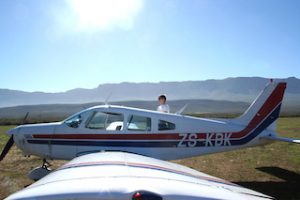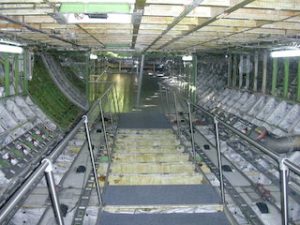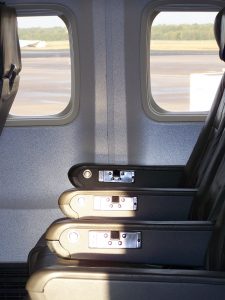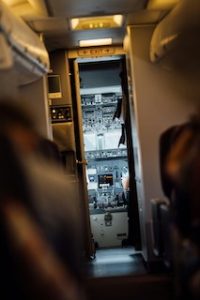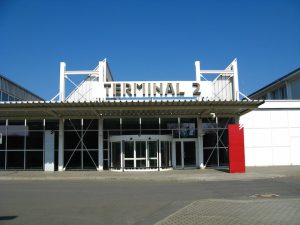Best Flight Attendant Training Near Me
 If you are considering a career as a flight attendant, you may be searching for the best flight attendant training programs in your area. As you explore your options, it’s important to understand how location can influence both the cost of training and the quality of your educational experience. This article will delve into the factors to consider when searching for flight attendant training near you, highlighting how geographical location impacts tuition, program offerings, and industry connections.
If you are considering a career as a flight attendant, you may be searching for the best flight attendant training programs in your area. As you explore your options, it’s important to understand how location can influence both the cost of training and the quality of your educational experience. This article will delve into the factors to consider when searching for flight attendant training near you, highlighting how geographical location impacts tuition, program offerings, and industry connections.
Attending a flight attendant training near me
Looking for flight attendant training near me? Look no further. We understand that finding the best flight attendant school is essential for anyone looking to enter the aviation industry. This training prepares individuals for the myriad responsibilities they will face on the job, including:
- Ensuring passenger safety: Learning safety protocols, emergency procedures, and how to manage in-flight medical situations.
- Customer service skills: Developing the interpersonal skills necessary to provide excellent service to passengers from diverse backgrounds.
- Regulatory compliance: Understanding the regulations set forth by aviation authorities, including the Federal Aviation Administration.
Choosing a program that meets your educational needs while considering the cost implications of its location is crucial to your success.
How location affects the cost of flight attendant training
The location of a flight attendant training program can significantly impact its cost. Here is a closer look at how geographical factors influence tuition fees and overall expenses.
1) Metropolitan vs. rural areas
Training programs in metropolitan areas tend to have higher tuition fees compared to those in rural areas. Here are some reasons for this disparity:
-
-
- Cost of living: Metropolitan areas generally have a higher cost of living, which can translate into increased operational costs for training institutions. These costs are often passed on to students in the form of higher tuition.
- Demand for training: Cities with larger populations may experience a higher demand for flight attendant training programs, allowing schools to charge premium rates due to competition and demand.
- Amenities and resources: Urban training programs often have access to more resources, including state-of-the-art facilities, experienced instructors, and up-to-date training equipment. These amenities can contribute to higher costs but also enhance the quality of education.
-
2) Proximity to major airports
Flight attendant schools located near major airports can offer significant advantages, including:
-
-
- Industry connections: Schools situated close to airports often have established relationships with airlines, providing students with networking opportunities, internships, and job placement services. This can enhance the training experience and improve job prospects after graduation.
- Real-world experience: Proximity to airports allows training programs to incorporate real-world experiences into their curriculum. Students can participate in field trips, observe operations, and interact with industry professionals.
- Higher tuition costs: While these benefits are valuable, they often come at a higher price. Training programs in major metropolitan areas or near airports may charge more due to the advantages they provide.
-
Evaluating flight attendant training programs
When searching for flight attendant training near you, it is essential to evaluate programs based on several criteria beyond cost. Here is how to choose the right program:
1) Accreditation and reputation
Ensure that the training program you select is accredited and has a positive reputation within the aviation industry. Look for schools recognised by aviation authorities and those that have successful graduates who can attest to the quality of education received.
2) Curriculum and training methods
Assess the curriculum offered by each program. Comprehensive flight attendant training should cover:
-
-
- Safety procedures: Training in emergency protocols, first aid, and evacuation procedures.
- Customer service: Courses that focus on communication skills, cultural sensitivity, and conflict resolution.
- Hands-on experience: Programs that incorporate simulations and practical exercises to prepare students for real-world scenarios.
-
3) Job placement services
Programs that offer robust job placement services can be particularly beneficial. Look for schools that provide:
-
-
- Career counselling: Assistance with resume writing, interview preparation, and job search strategies.
- Industry connections: Partnerships with airlines that can facilitate internships and job placements.
-
4) Reviews and testimonials
Research online reviews and testimonials from former students. Feedback about the program’s effectiveness, job placement success, and overall experience can provide valuable insights.
Tips for finding flight attendant training near me
Searching for flight attendant training near you can feel overwhelming, but there are strategies to streamline your search. Here are some tips to help you find the best options:
- Use online search tools: Leverage search engines to find flight attendant training programs in your area. Use keywords such as “flight attendant training near me” to generate relevant results. You can also explore websites dedicated to education and career training to find listings of accredited programs.
- Explore local community colleges: Many community colleges offer flight attendant training programs at competitive prices. These programs may have lower tuition rates due to reduced overhead costs and can provide quality education and job placement services.
- Attend open houses or information sessions: Many training programs host open houses or information sessions. Attending these events can provide you with insights into the curriculum, instructors, and facilities. You’ll also have the opportunity to ask questions and meet current students.
- Connect with alumni: Reach out to alumni from the programs you’re considering. They can offer firsthand experiences and insights into the effectiveness of the training and the job placement process. Social media platforms like LinkedIn can be a valuable tool for making these connections.
- Consider online training options: While in-person training can offer benefits, online flight attendant training programs are becoming increasingly popular. These programs can provide flexibility and often come at a lower cost. Be sure to research the credibility of online programs and ensure they provide the necessary training to meet industry standards.
Balancing cost and quality
When searching for flight attendant training near you, it’s crucial to strike a balance between cost and quality. Here are some strategies to help you make an informed decision:
1) Budgeting for additional expenses
When evaluating the cost of training programs, consider additional expenses beyond tuition, such as:
-
-
- Materials: Textbooks, uniforms, and other required materials can add to the cost.
- Travel expenses: If you choose a program located farther away, consider the cost of transportation and accommodation during training.
-
2) Financial aid options
Investigate financial aid options that may be available through the training program or through external scholarships and grants. Many schools offer payment plans or assistance to help students manage tuition costs.
3) Weighing long-term value
While initial costs may be higher for programs in metropolitan areas or those with extensive industry connections, consider the long-term value of the training. A reputable program that offers job placement services and strong industry ties may lead to better job opportunities and higher earning potential in the future.
Future of the aviation industry
As you explore flight attendant training programs, it is important to consider the broader trends in the aviation industry. The demand for flight attendants is expected to grow as air travel continues to rebound. Understanding the job market can help you make informed decisions about your training and career path.
1) Growth in air travel: With increasing global travel demand, airlines are continually seeking qualified flight attendants. This growth in the aviation sector presents ample opportunities for aspiring flight attendants who complete quality training programs.
2) Emphasis on customer service: As competition among airlines intensifies, there’s an increasing emphasis on exceptional customer service. Training programs that focus on developing these skills will be advantageous for graduates looking to stand out in the job market.
3) Technological advancements: The aviation industry is rapidly evolving with new technologies, from improved safety equipment to advanced passenger management systems. Staying informed about technological trends and incorporating them into training programs can enhance the preparedness of future flight attendants.
Evaluate thoroughly
Finding the best flight attendant training near you involves careful consideration of various factors, including location, cost, and the quality of the program. While metropolitan areas may offer higher tuition fees, they also provide valuable industry connections and resources. Conversely, rural programs may be more affordable but can lack the same level of industry engagement.
When evaluating flight attendant training programs, prioritize accreditation, curriculum quality, job placement services, and student reviews. By conducting thorough research and utilizing available resources, you can find a program that aligns with your goals and sets you on the path to a rewarding career as a flight attendant.
Embarking on this journey requires commitment, but with the right training and support, you can take to the skies and provide exceptional service to passengers while ensuring their safety and comfort. Your future in aviation begins with informed choices and a dedication to excellence.

